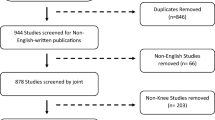Abstract
Stress radiography presents the golden standard to quantify posterior laxity in posterior cruciate ligament (PCL) insufficiency. Several different techniques are currently available, but comparative data are insufficient. Different stress radiographic techniques result in different values for posterior laxity. Comparative controlled clinical study was designed. Prior to PCL reconstruction 30 patients underwent a series of stress radiographs: Telos device, hamstring contraction, kneeling view, gravity view, and an axial view. Posterior displacement, side-to-side difference (SSD), condyle rotation, required time, and pain were measured. Posterior displacement was: Telos 12.7 ± 3 mm (SSD 10.6 ± 3.1 mm), hamstring contraction 11.2 ± 3.2 mm (SSD 8.5 ± 3.4 mm), kneeling 14.4 ± 3.8 mm (SSD 10.2 ± 3.5 mm), gravity view 10.5 ± 2.8 mm (SSD 9.1 ± 2.4 mm), and axial view 19.4 ± 6.9 mm (SSD 8.5 ± 4.1 mm). In comparison to Telos the hamstring contraction, gravity, and the axial view underestimated the SSD by approximately 2 mm. Telos and kneeling caused significantly more pain than all other techniques (P < 0.001). The axial view was fastest (115 s, P < 0.001) and Telos longest (305 s, P < 0.001), respectively. Telos indicated the lowest rotational error with a significant difference between kneeling and gravity (P < 0.003). In contrast to Telos as the golden standard, hamstring contraction, gravity, and axial view underestimated the SSD. Kneeling and Telos are comparable with respect to SSD and pain. Although kneeling indicates a greater rotational error than Telos, it seems to be a reliable alternative for quantifying posterior tibial displacement in a more simple and fast way.






Similar content being viewed by others
References
Boyer P, Djian P, Christel P, Paoletti X, Degeorges R (2004) [Reliability of the KT-1000 arthrometer (Medmetric) for measuring anterior knee laxity: comparison with Telos in 147 knees]. Rev Chir Orthop Reparatrice Appar Mot 8:757–764
Chassaing VDF, Touzard R et al (1995) Etude radiologique du L.C.P.`a 90 de flexion. Rev Chir Orthop 81:35–38
Daniel DM, Stone ML, Sachs R, Malcom L (1985) Instrumented measurement of anterior knee laxity in patients with acute anterior cruciate ligament disruption. Am J Sports Med 6:401–407
Hewett TE, Noyes FR, Lee MD (1997) Diagnosis of complete and partial posterior cruciate ligament ruptures. Stress radiography compared with KT-1000 arthrometer and posterior drawer testing. Am J Sports Med 5:648–655
Jacobsen K (1976) Stress radiographical measurement of the anteroposterior, medial and lateral stability of the knee joint. Acta Orthop Scand 3:335–4
Jardin C, Chantelot C, Migaud H, Gougeon F, Debroucker MJ, Duquennoy A (1999) [Reliability of the KT-1000 arthrometer in measuring anterior laxity of the knee: comparative analysis with Telos of 48 reconstructions of the anterior cruciate ligament and intra- and interobserver reproducibility]. Rev Chir Orthop Reparatrice Appar Mot 7:698–707
Louisia S, Siebold R, Canty J, Bartlett RJ (2005) Assessment of posterior stability in total knee replacement by stress radiographs: prospective comparison of two different types of mobile bearing implants. Knee Surg Sports Traumatol Arthrosc 6:476–482
Margheritini F, Mancini L, Mauro CS, Mariani PP (2003) Stress radiography for quantifying posterior cruciate ligament deficiency. Arthroscopy 7:706–711
Passler HH, Marz S (1986) [The radiologic Lachman test—a simple and sure method for the detection of damage to the cruciate ligament]. Unfallchirurgie 6:295–300
Puddu GGE, Chambat P, Paulis F (2000) The axial view in evaluating tibial translation in cases of insufficiency of the posterior cruciate ligament. Arthroscopy 16:217–220
Schulz MS, Russe K, Lampakis G, Strobel MJ (2005) Reliability of stress radiography for evaluation of posterior knee laxity. Am J Sports Med 4:502–506
Staubli HU, Jakob RP (1990) Posterior instability of the knee near extension. A clinical and stress radiographic analysis of acute injuries of the posterior cruciate ligament. J Bone Joint Surg Br 2:225–230
Staubli HU, Noesberger B, Jakob RP (1992) Stressradiography of the knee. Cruciate ligament function studied in 138 patients. Acta Orthop Scand Suppl 249:1–27
Stedtfeld HW, Strobel M (1983) Choice of suitable measurement procedures for stress roentgen images of the knee joint. Unfallheilkunde 11:463–471
Strobel M, Stedtfeld HW (1986) Stress roentgen study of the knee joint–an evaluation of status. Unfallchirurg 6:272–279
Strobel MJ, Weiler A, Eichhorn HJ (2000) Diagnosis and therapy of fresh and chronic posterior cruciate ligament lesions. Chirurg 9:1066–1081
Strobel MJ, Weiler A (2001) Management of the posterior cruciate ligament-deficient knee. Tech Orthop 2:167–194
Strobel MJ, Weiler A, Schulz MS, Russe K, Eichhorn HJ (2002) Fixed posterior subluxation in posterior cruciate ligament-deficient knees: diagnosis and treatment of a new clinical sign. Am J Sports Med 1:32–38
Author information
Authors and Affiliations
Corresponding author
Rights and permissions
About this article
Cite this article
Jung, T.M., Reinhardt, C., Scheffler, S.U. et al. Stress radiography to measure posterior cruciate ligament insufficiency: a comparison of five different techniques. Knee Surg Sports Traumatol Arthrosc 14, 1116–1121 (2006). https://doi.org/10.1007/s00167-006-0137-3
Received:
Accepted:
Published:
Issue Date:
DOI: https://doi.org/10.1007/s00167-006-0137-3




